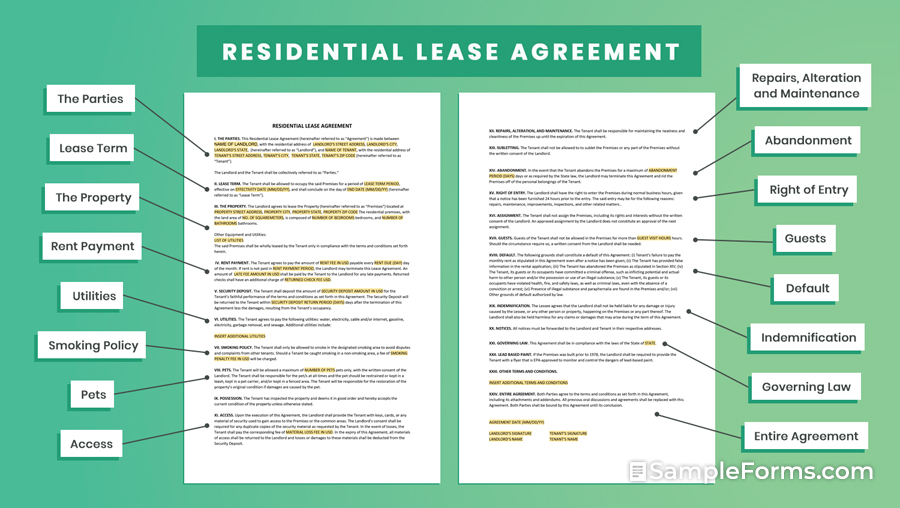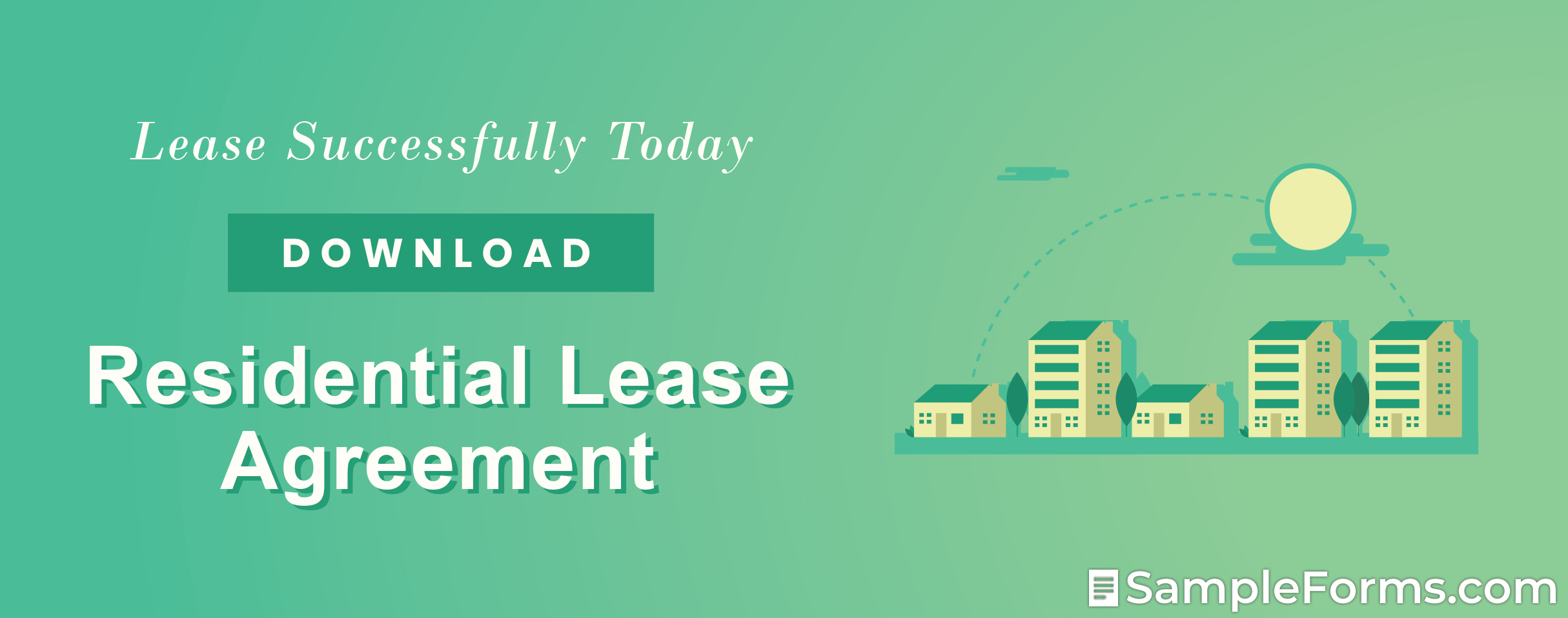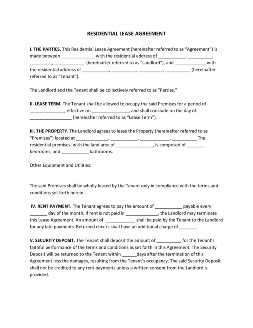- Eviction Notice Forms
- Power of Attorney Forms Forms
- Bill of Sale (Purchase Agreement) Forms
- Lease Agreement Forms
- Rental Application Forms
- Living Will Forms Forms
- Recommendation Letters Forms
- Resignation Letters Forms
- Release of Liability Agreement Forms
- Promissory Note Forms
- LLC Operating Agreement Forms
- Deed of Sale Forms
- Consent Form Forms
- Support Affidavit Forms
- Paternity Affidavit Forms
- Marital Affidavit Forms
- Financial Affidavit Forms
- Residential Affidavit Forms
- Affidavit of Identity Forms
- Affidavit of Title Forms
- Employment Affidavit Forms
- Affidavit of Loss Forms
- Gift Affidavit Forms
- Small Estate Affidavit Forms
- Service Affidavit Forms
- Heirship Affidavit Forms
- Survivorship Affidavit Forms
- Desistance Affidavit Forms
- Discrepancy Affidavit Forms
- Career Assessment - 16+ Examples, Format, Tips, Pdf Forms
- Undertaking Affidavit Forms
- General Affidavit Forms
- Affidavit of Death Forms
Residential Lease Agreement
Having a decent place to stay at the end of the day is not a luxury that everyone can afford. But no matter how expensive or average-looking a residential property is, you must be able to consider it a safe haven after a very exhausting day. And if a landlord like you wishes to provide temporary residence, you’ll need a residential lease agreement to ensure both you and the tenant comply with the deal. To know more, read on below. Read More
Residential Lease Agreement
What Is a Residential Lease Agreement?

A residential lease agreement is a legally binding document that contains the terms and conditions of the lease between the landlord and the tenant regarding the rental of a residential property. The lease term varies from fixed to a month-to-month arrangement—depending on the stipulations of the agreement or the State minimum requirements. The deal consists of the responsibilities of the landlord, which is to lease the premises and the tenant, which is to issue payment.
How to Create a Residential Lease Agreement?
Renting is the most practical and logical way of living if you intend to stay in a particular place for a short period. According to My Smart Move, 36.6% of US households are renting their homes. This includes adults aged 45-64—an age bracket where adults are less likely to rent. The most common reasons for renting are personal choices and lack of financial resources.
A residential lease agreement promotes peace and order on the premises. To help you, a landlord, create your lease agreement, here’s how.
1. Get to Know the Tenant
Once you have found yourself a tenant and they have filled out the rental application and paid a corresponding fee, run a background check on your tenant—this includes their background, credit history, and their criminal history. You would want to make sure that you are welcoming and dealing with a decent tenant that will not wreak havoc for the days to come.
2. Establish Lease Term, Property Description, and Payment Terms
Your lease term is either a fixed-term or a month-to-month tenancy. A fixed-term refers to a year of occupancy, whereas a month-to-month term refers to an ongoing tenancy that can be terminated by either party as long as notice should be within 30-60 days prior. In two separate provisions, including the property’s description, the monthly rent, and the due date of the payment. You may impose late fees in case of late payments.
3. Include Fundamental Terms and Conditions
The remaining terms and conditions primarily consist of the responsibilities of both parties upon the execution of the agreement. These terms and conditions include smoking policies, pets, access, subletting, maintenance and repair, right of entry, assignment, etc. As much as you can, include all the necessary terms and conditions because your complaint will not hold up in court if it is not stated in the agreement.
4. Elaborate the Default and Termination Clause
A default clause contains a set of violations that will consider the agreement terminated. Should either party breach (or repeatedly breach) a provision of the agreement, then the complaining party may terminate this agreement. If such a breach can be fixed by paying a corresponding fee, then the landlord may not terminate the agreement.
A termination clause allows either party to terminate the agreement legally. Some of these grounds include uninhabitable premises, domestic abuse in the premises, violation of privacy by the landlord, etc.
5. Execute the Agreement
Sign the document with the witnesses after reviewing the whole document. On the day of the authorization, the landlord should provide the keys to the premises and the common areas the tenant should give the security deposit, pro-rated rent (if applicable), and the rent for the first month.
Don’t forget to discuss renewal options with your tenant. Provide a renewal or a non-renewal letter should you wish to renew (or not) the lease. The security deposit should be returned to the tenantless the itemized deductions, e.g., damages and unpaid rent should you choose not to renew the lease.
Frequently Asked Questions
What are the most important points to remember about making a lease agreement?
Since states have different rules, familiarize yourself with your state laws, to avoid technical terms that the party will have a trouble understanding, to include all stipulations that you demand (including payment-related terms), and to consult with a lawyer.
Will I be sent to jail if I break the lease early?
No. According to Avvo, you will not be sent to jail if you break the lease early. However, you might be asked by the landlord to pay for the remaining months of the lease with interest and risk losing your security deposit.
How can a lease agreement be automatically voided?
You can avoid or terminate a lease if the other party was found to have provided fraudulent information, coerced, or have used the premises for illegal activities. In short, if the activities or execution was against the law.
What considers a written lease valid?
According to The Balance Small Business, a written lease must have the starting and ending date, the property’s description (physical address), and the monthly rent. However, if the lease allows the tenant to sue the landlord or demands the tenants to waive their rights over their security deposit, the lease will be invalid and unenforceable.
Is a verbal lease agreement enforceable in court?
Yes. If the lease’s duration is less than one year, then it is enforceable in court.
A landlord is your regular businessperson that seeks to protect their investment or assets. In this case, the property itself—it’s the one investment that helps them get by. And safeguard your assets would mean establishing ground rules and promoting peace and order on the premises. Such is found in a residential lease agreement. This lease agreement helps achieve common ground with the tenant for a favorable living condition.

